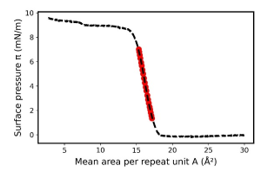You are here :
- Unité de recherche
- CY LPPI
- Home page
- Research activities
Modelling
- Molecular Modelling
-
One of the research axes of the “Modelling” theme focuses on molecular modelling in the field of organic electronics, with an emphasis on applications to (i) organic and/or hybrid solar cells (photovoltaics), (ii) organic light-emitting diodes (OLEDs) and (iii) studying various phenomena occurring in mixtures of chemical dopants with polymers or organic covalent networks (COFs).
We are particularly interested in the phenomena occurring at the organic-organic and organic-inorganic interfaces in all-organic and perovskite solar cells. The role of increased geometrical deformations at the interfaces and electronic polarisations are particularly important factors in causing so-called “energy bending”, which has a crucial impact on the efficiency of charge separation at the donor-acceptor interface in solar cells. These studies show that it is absolutely essential to prioritise the properties at the various interfaces over those of the bulk, and thus help to guide the design of new materials.
In parallel, we are interested in studying the optoelectronic properties of organic materials applied in OLEDs (impact of micro-aggregates in solution, effect of aggregation, thermal relaxation and guest-host combination). A strong emphasis is placed on understanding the TADF (thermal activation of delayed fluorescence) and TTA (triple-triplet annihilation) mechanisms, and on the nature of excitons in two-dimensional perovskites in relation to the nature of the organic protective layer.
Keywords: molecular modelling, organic electronics, solar cells, perovskites, organic light-emitting diodes (OLEDs), energy bending, TADF, TTA, …
Selection of recent papers (or patents)On the Molecular Origin of Charge Separation at the Donor–Acceptor Interface, Gjergji Sini, Marcel Schubert, Chad Risko, Steffen Roland, Olivia P. Lee, Zhihua Chen, Thomas V. Richter, Daniel Dolfen, Veaceslav Coropceanu, Sabine Ludwigs, Ullrich Scherf, Antonio Facchetti, Jean M. J. Fréchet, Dieter Neher, Adv. Energy Mater. 2018, 8, 1702232, https://doi.org/10.1002/aenm.201702232
Organic Solar Cells: On the Physical Origins of Charge Separation at Donor–Acceptor Interfaces in Organic Solar Cells: Energy Bending versus Energy Disorder, Leonardo Evaristo de Sousa, Veaceslav Coropceanu, Demétrio Antônio da Silva Filho, Gjergji Sini, Adv. Theory Simul. 2020, 3, 4; 2070008, https://doi.org/10.1002/adts.202070008
TADF versus TTA emission mechanisms in acridan and carbazole-substituted dibenzo[a,c]phenazines: Towards triplet harvesting emitters and hosts, Viktorija Andruleviciene, Karolis Leitonas, Dmytro Volyniuk, Gjergji Sini, Juozas Vidas Grazulevicius, Vytautas Getautis, Chemical Engineering Journal 2021, 417, 127902, https://doi.org/10.1016/j.cej.2020.127902
Interfacial versus Bulk Properties of Hole-Transporting Materials for Perovskite Solar Cells: Isomeric Triphenylamine-Based Enamines versus Spiro-OMeTAD, Jurate Simokaitiene, Monika Cekaviciute, Kristina Baucyte, Dmytro Volyniuk, Ranush Durgaryan, Desiré Molina, Bowen Yang, Jiajia Suo, YeonJu Kim, Demetrio Antonio da Silva Filho, Anders Hagfeldt, Gjergji Sini, Juozas V. Grazulevicius, ACS Appl. Mater. Interfaces 2021, 13, 18, 21320–21330, https://doi.org/10.1021/acsami.1c03000
Evolution of the Nature of Excitons and Electronic Couplings in Hybrid 2D Perovskites as a Function of Organic Cation π-Conjugation, Qingqing Dai, Hong Li, Gjergji Sini, Jean-Luc Bredas, Adv. Funct. Mater. 2022, 32, 2108662, https://doi.org/10.1002/adfm.202108662 - Phase separation in 2D polymer blends
-
In parallel to the experimental study the miscibility properties of polymer blends at the air-water interface, a mean-field thermodynamic model initially developed to describe 3D polymer blends has been adapted to model the 2D films. The aim is to determine the key physico-chemical parameters affecting phase separation, to ultimately control the film morphology.
Before studying mixtures, the developed model allows for the prediction of surface pressure–molecular area isotherms of pure polymer Langmuir monolayers without adjustable parameters. Moreover, the monolayer thickness predicted by the model is consistent with available experimental data.
[SC1]Lien vers page « Monomolecular films »Key words : thermodynamic model, Langmuir films
Selection of recent papers (or patents)
Masnada, E.M.; Julien, G.; Long, D.R. Miscibility maps for polymer blends: Effects of temperature, pressure, and molecular weight. J. Polym. Sci. Part B: Polym. Phys. 2014, 52, 419-443. https://doi.org/10.1002/polb.23436



